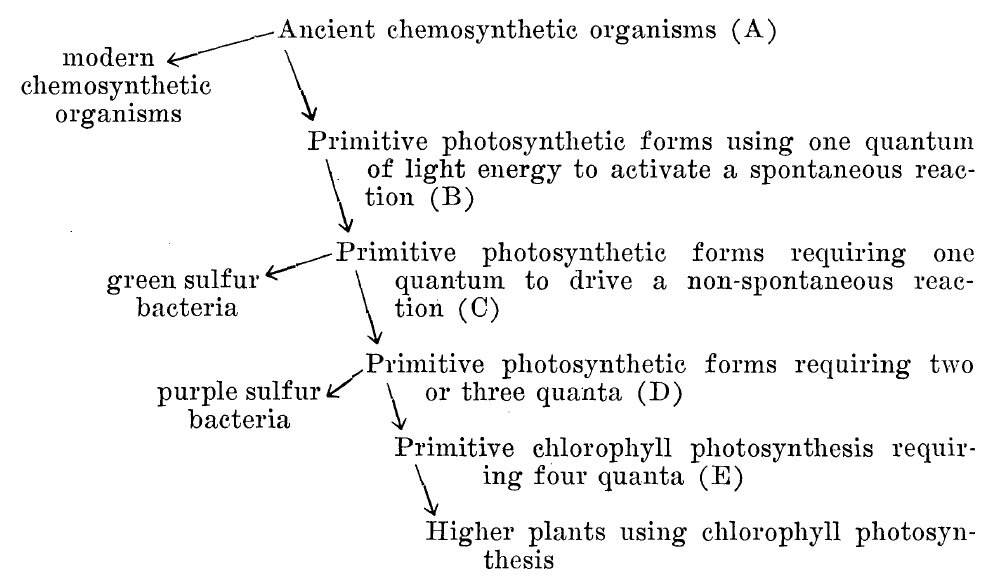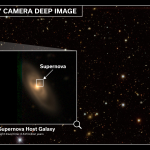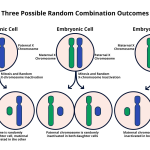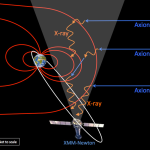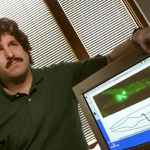The evolution of photosynthesis marks a pivotal moment in the history of life on Earth, fundamentally altering the atmosphere and enabling the development of complex ecosystems. Around 2.3 billion years ago, cyanobacteria emerged as the first organisms capable of harnessing sunlight to produce oxygen, leading to what is known as the Great Oxidation Event. This revolutionary capability not only allowed for the accumulation of oxygen and paved the way for aerobic metabolism, but also sparked an intricate relationship between photosynthesis vs respiration. The discovery of methyl-plastoquinone, a unique molecule linked to this process, suggests a deeper connection between the mechanisms of photosynthesis and those of early life forms. By understanding these evolutionary advancements, we gain insights into how oxygen production and consumption shaped the metabolic landscape we are familiar with today.
In the context of biological development, the transition from anaerobic to aerobic processes signifies the evolution of photosynthetic systems that converted light energy into chemical energy, releasing oxygen as a byproduct. This groundbreaking transformation enabled organisms to utilize oxygen, fostering diverse metabolic pathways and leading to the complexity of life as we know it. The emergence of cyanobacteria played a crucial role in this evolution, spurring significant environmental changes and influencing the dynamics of early life forms. Understanding the interplay between light-driven metabolism and the respiratory processes of organisms highlights the intricate balance of life on Earth. As researchers delve deeper into these biochemical pathways, they reveal the fascinating nuances of how energy production evolved in response to changing atmospheric conditions.
Understanding the Evolution of Photosynthesis
The evolution of photosynthesis is a landmark event in the history of life on Earth, marking the transition from an anaerobic world to one rich in oxygen. Initially, life forms utilized anaerobic metabolism, existing without oxygen. However, the advent of photosynthesis, primarily attributed to cyanobacteria, radically altered the atmosphere over 2.3 billion years ago during the Great Oxidation Event. These microorganisms harnessed sunlight to convert carbon dioxide and water into glucose, releasing oxygen as a byproduct, fundamentally reshaping the environment and paving the way for the evolution of aerobic organisms.
The significance of this evolutionary leap cannot be overstated; it set in motion a chain reaction that allowed for the emergence of complex life as we know it. As oxygen levels rose, new biochemical pathways developed, notably aerobic metabolism, enabling organisms to generate more energy from nutrients compared to anaerobic processes. This innovation facilitated the diversification of life forms, resulting in an explosion of biological complexity that characterized the subsequent eras of Earth’s history.
The Role of Cyanobacteria in Oxygen Production
Cyanobacteria play a crucial role in the narrative of photosynthesis and oxygen production. As the first organisms to perform oxygen-evolving photosynthesis, they utilized light energy to convert carbon dioxide into organic compounds, significantly increasing atmospheric oxygen levels—a pivotal moment referred to as the Great Oxidation Event. This process not only enriched the Earth’s atmosphere with oxygen, but also set the stage for the evolution of aerobic respiration, a metabolic process that is fundamentally reliant on oxygen.
Moreover, the impact of cyanobacteria extended beyond mere oxygen production; they established foundational ecological roles that continue to influence modern ecosystems. Their photosynthetic activities contribute to carbon fixation, forming the base of the food web in aquatic environments, while their ability to inhabit diverse ecological niches speaks to the adaptability and resilience of these ancient microorganisms. Understanding cyanobacteria’s contributions provides vital insight into the evolutionary transitions that shaped life on Earth.
Aerobic Metabolism and Its Evolutionary Importance
Aerobic metabolism represents a significant evolutionary advancement, allowing organisms to utilize oxygen for efficient energy production. This metabolic pathway is much more efficient than anaerobic processes, leading to increased ATP yield, which is necessary for sustaining larger and more complex organisms. The simultaneous evolution of aerobic metabolism alongside photosynthesis indicates an intricate relationship between these two processes. As oxygen became available through photosynthesis, organisms evolved mechanisms to harness it, leading to the development of aerobic respiration.
The emergence of aerobic metabolism was not merely a byproduct of oxygen production but a pivotal evolutionary trait that facilitated rapid advancements in organism complexity. As creatures adapted to utilize aerobic metabolism, they developed specialized cells and structures, such as mitochondria, that optimized the efficiency of energy production, thus bolstering the survival and diversification of multicellular organisms ranging from plants to animals.
The Great Oxidation Event: A Turning Point in Evolution
The Great Oxidation Event (GOE) marks one of the most significant transitions in Earth’s geological history, occurring approximately 2.4 billion years ago when atmospheric oxygen levels surged due to photosynthetic activity, mainly from cyanobacteria. This pivotal change not only reconfigured the planet’s atmosphere but also had profound biological consequences, enabling the evolution of aerobic organisms. The shift from a reducing to an oxidizing atmosphere influenced nutrient cycles and the distribution of life, leading to significant evolutionary adaptations.
The implications of the GOE extend beyond the mere presence of oxygen; it catalyzed chemical and biological processes that shaped life. Organisms began to develop protective mechanisms against oxidative stress and learned to exploit the energy potential of oxygen through sophisticated metabolic pathways. Consequently, this event laid the groundwork for the evolution of complex life forms, introducing the possibilities of multicellularity and further evolutionary advancements.
The Discovery of Methyl-Plastoquinone: A Missing Link
Recent research has unveiled methyl-plastoquinone, a unique molecule that connects the mechanisms of photosynthesis and respiration. Discovered in nitrogen-utilizing bacteria, this molecule exhibits characteristics akin to quinones used by plants for photosynthesis, suggesting an evolutionary relationship that predates the widespread oxygen production by cyanobacteria. This discovery provides a potential missing link that could illuminate the timelines of when photosynthetic and respiratory processes developed, hinting that both may have co-evolved.
The implications of studying methyl-plastoquinone extend beyond just an academic curiosity; they invite a reevaluation of our understanding of early life on Earth. Recognizing that some microorganisms may have utilized or adapted to oxygen before it became abundant challenges previously held perceptions about the singularity of the Great Oxidation Event. This suggests a more intricate tapestry of life’s evolution, where the interplay between metabolism and oxygen presence shaped the pathways leading to complex multicellular organisms.
Photosynthesis vs. Respiration: A Biochemical Perspective
The interplay between photosynthesis and respiration forms the basis of the biological energy cycle on Earth. Photosynthesis is the process through which light energy is converted into chemical energy stored in glucose, releasing oxygen as a byproduct. In contrast, respiration is the process by which organisms metabolize this glucose in the presence of oxygen to produce energy, with carbon dioxide as a byproduct. Understanding the dichotomy and symbiosis of these processes is crucial for comprehending the energy dynamics that sustain life.
The distinct yet interconnected pathways of photosynthesis and respiration highlight the evolution of life and energy utilization strategies. While photosynthesis laid the foundation for oxygen-rich atmospheres, respiration capitalized on this development, leading to a broad array of life forms that utilize aerobic metabolism. The balance between these processes is fundamental to maintaining ecological stability, showcasing the dynamic relationship between producers and consumers in various ecosystems.
The Role of Quinones in Cellular Metabolism
Quinones are vital components in cellular metabolism, acting as electron carriers in both photosynthesis and respiration. They play a critical role in transferring energy within the cell, facilitating the conversion of light energy into chemical energy in plants, and supporting aerobic respiration in animal cells. The existence of different types of quinones, such as the newly identified methyl-plastoquinone, underscores the diversity of biochemical adaptations that have evolved in response to oxygen availability and energy needs over billions of years.
Moreover, the study of quinones informs our understanding of evolutionary processes, as their structural variations relate to the metabolic strategies of different organisms. For instance, the adaptations of quinones in humans compared to those in plants illustrate the biochemical innovations that have allowed diverse life forms to thrive in various ecological niches. This highlights the evolutionary pathways that underscore the intricate connections between life forms and their metabolic processes.
The Evolutionary Relationship Between Oxygen and Life
The relationship between oxygen and the evolution of life is a complex narrative that provides insights into biochemical processes and environmental changes. As cyanobacteria began releasing oxygen through photosynthesis, the landscape of Earth transformed, enabling new evolutionary avenues for aerobic organisms. The adaptation to an oxygen-rich atmosphere necessitated significant biochemical innovations to utilize and survive amid increasing oxidative stress, laying the foundations for diverse life forms.
Understanding this evolutionary relationship emphasizes the adaptability of life and the intricate connections between environmental factors and biological processes. As the dynamics of oxygen production and consumption evolved, they shaped the pathways for speciation, adaptation, and interaction among organisms. The study of oxygen’s role in evolution is not merely a reflection of Earth’s past but also offers critical insights into the metabolic pathways and adaptations that sustain current biodiversity.
The Future of Research on Photosynthesis and Aerobic Metabolism
As research progresses, understanding the nuances of photosynthesis and aerobic metabolism remains essential in exploring the evolutionary history of life on Earth. Investigations into molecules like methyl-plastoquinone not only provide insights into the past but also present opportunities for biotechnological advancements. Enhanced knowledge in this field may lead to innovations in bioenergy, crop improvement, and sustainable practices that emulate natural processes.
The ongoing exploration of the biochemical underpinnings underlying photosynthesis and respiration holds promise for addressing contemporary challenges such as climate change and food security. By unraveling the complexities of these fundamental processes, researchers can uncover strategies for harnessing energy efficiently and sustainably, ultimately benefiting both the environment and humankind.
Frequently Asked Questions
What is the significance of the Great Oxidation Event in the evolution of photosynthesis?
The Great Oxidation Event, which occurred approximately 2.3 to 2.4 billion years ago, marks a pivotal moment in the evolution of photosynthesis. During this period, cyanobacteria began producing substantial amounts of oxygen through photosynthesis, fundamentally changing Earth’s atmosphere and enabling the development of aerobic metabolism in other life forms. This event highlights the interdependence between oxygen production via photosynthesis and its consumption through aerobic processes.
How do cyanobacteria contribute to the evolution of photosynthesis?
Cyanobacteria are crucial to the evolution of photosynthesis as they were among the first organisms to harness sunlight to convert carbon dioxide and water into oxygen and glucose. Their ability to perform photosynthesis significantly increased the amount of atmospheric oxygen, which in turn allowed for the evolution of aerobic metabolism in other species, marking a major transition in Earth’s biochemical cycles.
What role did methyl-plastoquinone play in understanding the evolution of photosynthesis?
Methyl-plastoquinone, a recently discovered variant of quinone, provides insight into the evolution of photosynthesis. Its existence in oxygen-utilizing bacteria suggests that processes related to oxygen production and consumption may have evolved simultaneously. This finding contributes to the debate about whether oxygen-producing photosynthesis or oxygen-consuming aerobic metabolism appeared first in evolutionary history.
What are the differences between photosynthesis and respiration in the context of evolution of photosynthesis?
Photosynthesis and respiration represent two fundamental biochemical processes in the evolution of life. Photosynthesis, primarily performed by plants and cyanobacteria, converts sunlight, carbon dioxide, and water into glucose and oxygen. Conversely, respiration is the process by which animals and other organisms convert glucose and oxygen into energy, producing carbon dioxide as a byproduct. Understanding these processes’ evolution helps clarify how organisms adapted to utilize oxygen produced by photosynthesis.
Did aerobic metabolism evolve before or after photosynthesis?
Research suggests that aerobic metabolism and photosynthesis may have evolved concurrently rather than one before the other. The discovery of methyl-plastoquinone indicates that some early bacteria may have already utilized oxygen before cyanobacteria began producing it, thus complicating the traditional view that photosynthesis must have preceded aerobic metabolism in evolutionary history.
| Key Points |
|---|
| The study explores the evolution of photosynthesis and aerobic metabolism. |
| Felix Elling led the research, focusing on a molecule from the bacterium Nitrospirota. |
| Methyl-plastoquinone is a newly discovered molecule that may act as a missing link. |
| It challenges the traditional view that photosynthesis evolved before oxygen consumption. |
| Quinones, which are present in all life forms, have different variants for metabolic functions. |
| The findings align with the concept of the Great Oxidation Event marking significant oxygen production by cyanobacteria. |
| Understanding these processes helps uncover how life adapted to utilize oxygen. |
Summary
The evolution of photosynthesis is a pivotal development in the history of life on Earth, playing a crucial role in the emergence of aerobic metabolism. Recent research led by Felix Elling uncovers intriguing evidence suggesting that the evolution of photosynthesis and oxygen consumption may not be a simple linear progression, but rather a simultaneous advancement. As this groundbreaking study reveals, the discovery of a unique molecule called methyl-plastoquinone presents new insights that could reshape our understanding of how early life forms adapted to utilize oxygen, thus paving the way for the diverse life we see today.
